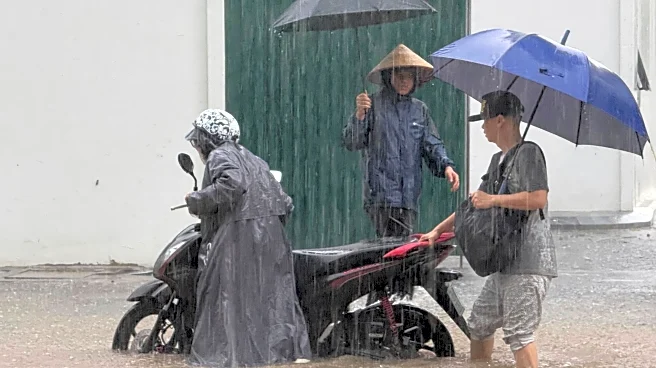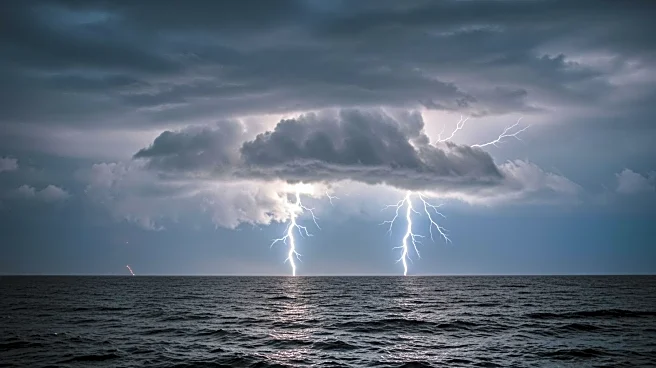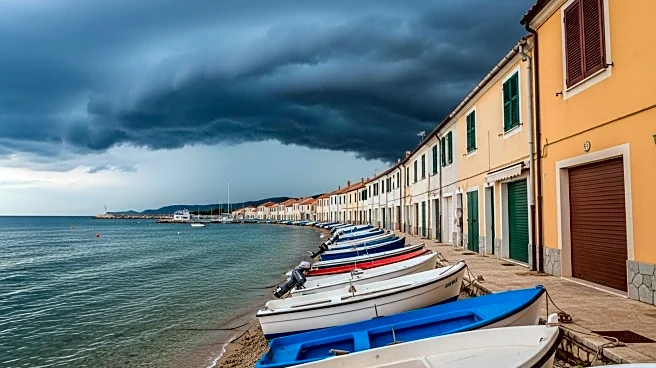Rapid Read • 7 min read
Typhoon Kajiki has struck Vietnam, resulting in the deaths of at least three people and injuring ten others. The storm, with winds reaching up to 130 kilometers per hour, has damaged nearly 7,000 homes and caused widespread flooding in Hanoi. It has also disrupted electricity supply by toppling 331 poles and felled 18,000 trees. The Vietnamese government evacuated 44,000 people and mobilized military personnel for relief efforts. The typhoon has now weakened into a tropical depression after crossing into Laos.
AD
The impact of Typhoon Kajiki highlights the vulnerability of Vietnam to severe weather events, exacerbated by climate change. The repeated occurrence of such storms poses significant challenges to the country's infrastructure, economy, and public safety. The damage to homes and agricultural land affects the livelihoods of thousands, while the disruption of electricity and transportation systems hampers recovery efforts. The situation underscores the need for improved disaster preparedness and climate resilience strategies.
Vietnamese authorities will continue to monitor the situation and provide relief to affected areas. Efforts to restore power and clear debris are underway, while the military remains on high alert for potential landslides and flash floods. Long-term strategies may include enhancing infrastructure resilience and implementing more robust evacuation plans to mitigate future storm impacts.
The frequent occurrence of typhoons in Vietnam raises concerns about the long-term effects of climate change on the region. The increased frequency and intensity of storms could lead to more significant economic losses and social disruption. International cooperation and investment in climate adaptation measures may be necessary to address these challenges.
AD
More Stories You Might Enjoy











